Meet SIAM’s Newest Leadership
Following SIAM’s recent elections, we are pleased to announce our new President-Elect, Vice President-at-Large, and Secretary, as well as Board of Trustees members and Council, as elected by the SIAM membership.
The President-Elect will shadow the current President for the next calendar year and serve as President January 1, 2023 - December 31, 2024. The newly elected Vice President-at-Large and Secretary will serve January 1, 2022 - December 31, 2023. The newly elected Board of Trustees members and Council will serve January 1, 2022 - December 31, 2024.
Thank you to the entire slate of outstanding candidates for your willingness to serve the SIAM community in this capacity, and to the SIAM members who cast their votes.
* indicates incumbent
President-Elect
Sven Leyffer
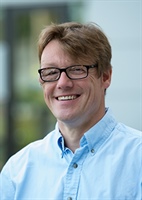
Affiliation:
Mathematics and Computer Science Division, Argonne National Laboratory
Candidate Statement:
I am honored to be a candidate for the position of SIAM President-Elect, and I am looking forward to serving the SIAM community in that position. SIAM is a tremendously successful, vibrant, and strong organization that serves a diverse community of applied and industrial mathematicians worldwide. This is a great time for applied mathematics, with new and exciting developments such as quantum computing and artificial intelligence that will shape society and our community for years to come. These opportunities, together with SIAM’s unique role as a bridge between industry and academia, make me hopeful about SIAM’s future despite the challenging events over the past 18 months.
Enhancing Membership and Meetings. The ongoing pandemic has brought new challenges for many of us over the past year and a half. For SIAM, these challenges have meant moving its conferences and meetings to a virtual environment, losing some of the ad hoc and immediate aspects of in-person meetings. The return to in-person or hybrid meetings creates both challenges and opportunities for SIAM. The option of virtual attendance provides an opportunity to greatly expand access to our meetings to groups that could otherwise not attend. At the same time, we need to ensure that any new format retains the character of SIAM meetings. If elected, I will build on my experience as SIAM Vice President for Programs to help SIAM develop new forms of access to its meetings, building on the tradition and expertise of its diverse activity groups.
Expanding Diversity, Equity, and Inclusion. Diversity, equity, and inclusion must be at the core of all aspects of SIAM’s activities—including conferences, publications, and membership—because dedication to principles of diversity enhances all of us. Given the opportunity, I will work with SIAM’s leadership to equip its officers, editors, and conference chairs with the practical tools and knowledge to expand SIAM’s commitment to diversity, equity, and inclusion.
Broadening the Impact of Industry. The aspect of my work that I enjoy most is the opportunity to work directly with application scientists and engineers on real-world problems. As such, I would like to work with SIAM’s Industry Committee to broaden the impact and presence of industry within SIAM’s activities by promoting industry panels and minisymposia at our conferences, increasing recognition of our members from industry, and raising awareness of industrial opportunities among students.
Improving SIAM’s Global Stature. Even though SIAM is headquartered in the U.S., it has long played an important role internationally through its sections, student chapters, journals, and conferences. Together with our international partner societies, we face common challenges—for example, to our journals and publications—that require a global response. I propose to continue to collaborate with our international partners through the International Council for Industrial and Applied Mathematics (ICIAM) to strengthen collaboration and promote industrial and applied mathematics, utilizing my experience as secretary of ICIAM.
Vice President-at-Large
Gitta Kutyniok
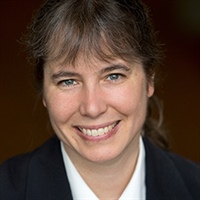
Affiliation:
Department of Mathematics, LMU Munich
Candidate Statement:
I joined SIAM in 2005 and have since then benefited significantly from this vibrant community, which always felt like home for me. The journals of SIAM, as well as its activity groups with their conferences and awards, indeed play a key role in industrial and applied mathematics. It has therefore been a privilege for me to serve as vice-chair and then chair of the SIAM Activity Group on Imaging Science. SIAM also quickly embraced the newly-arisen interest in data science — particularly with the SIAM Journal on Mathematics of Data Science, the SIAM Conference on Mathematics of Data Science, and the SIAM Activity Group on Data Science—where I have/had the pleasure and honor to serve as associate editor, co-chair, and vice-chair, respectively. My recent appointment as a member of the SIAM Committee on Committees and Appointments showed me even more the importance and strength of the various activities and initiatives of SIAM.
I am therefore particularly honored to be nominated for Vice President-at-Large. If elected, I will use my position to pave the way for SIAM to meet current and future challenges, such as the rapidly growing impact of artificial intelligence (AI) on various areas of industrial and applied mathematics, and the recognition of the role of mathematics in the field of AI. I will strongly support our activity groups and sections to ensure their continuous growth on an international scale and strengthen their role as vibrant research communities in their respective fields. In this respect, one could also envision using topics of joint interest, such as deep learning, for cross-fertilization. Of key importance to me are also our Prize Program and Fellows Program, which recognize significant contributions in industrial and applied mathematics. At the same time, the awards support top researchers in their careers and showcase research highlights beyond our community, thereby indeed playing a major role for SIAM.
Secretary
Susan E. Minkoff*
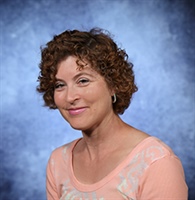
Affiliation:
University of Texas at Dallas
Candidate Statement: The main responsibility of the SIAM Secretary is to chair the Committee on Committees and Appointments (CCA), which has oversight over all SIAM committees that are not elected. My primary responsibility and that of the CCA is to work with the dedicated committee chairs to identify committee members who are working hard to contribute to their assigned committees, and to continually try to involve fresh faces in all SIAM work. Chairing the CCA has allowed me to interact with very hard-working vice presidents and committee chairs who accomplish great things despite the fact that SIAM is not their main job. It’s exciting to try to involve more and more of the almost 15,000 members of the community in SIAM activities. And it’s important. No society can be healthy if the same people are tapped continuously for all jobs. Luckily, SIAM has a diverse and enthusiastic group of members who are generally happy to contribute when asked. The Secretary also has the pleasure of chairing the I.E. Block Community Lecture Committee, which presents topical math ideas to a wide audience at the SIAM Annual Meeting.
One of SIAM's biggest challenges is to attract a larger chunk of industrial members. SIAM has found that often companies (even large companies) have only one or two SIAM members, and this small SIAM presence is often due to the fact that many people are only members of one professional organization (an engineering or applied science society, for example). However, working towards increasing the number of SIAM industry members and those who serve on committees is an important goal that the CCA has taken very seriously.
SIAM has been a leader in equity, diversity, and inclusion (EDI) for a long time. Now with Ron Buckmire, the new VP of EDI, SIAM’s goal to be the most inclusive professional math organization is further strengthened. I can say strongly that the CCA works hard to include a diverse group of members on all its committees. It would be an honor to serve a second term as SIAM Secretary.
Board of Trustees
Alison Ramage*
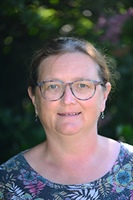
Affiliation:
Department of Mathematics and Statistics, University of Strathclyde
Candidate Statement:
Like all other organizations, SIAM has faced enormous challenges over the last couple of years. Although it has been very successful at, for example, pivoting its very active conference program onto online platforms at very short notice, many other challenges still lie ahead in terms of adapting to global changes across all aspects of its business. However, it is important to recognize that the COVID-19 pandemic has also provided SIAM with opportunities going forward. For example, the current high profile of applied mathematics and data science is an excellent platform for SIAM to build on in terms of increasing visibility and membership. Also, the forced move to online delivery of activities such as the Visiting Lecturer Program, career fairs, and industrial outreach has enabled engagement with a much broader international community. Conferences will clearly continue to be key SIAM activities going forward, so it will be important to ensure that whatever form future events take, they remain accessible and affordable for all SIAM members wherever they are located geographically — including students, early career members, and minority groups. For me personally, it has been a tremendously interesting time to be part of the SIAM Board, and I would very much welcome the chance to continue my participation in shaping SIAM’s future for the next three years.
Beatrice Riviere
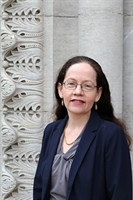
Affiliation:
Department of Computational and Applied Mathematics, Rice University
Candidate Statement:
SIAM is the leading society for computational and applied mathematicians. It is the place where new mathematics are developed to solve real-world problems. SIAM's platform provides rich support for collaborations between scientists from academia, industry, research institutes, and government laboratories. SIAM resources are more important than ever as the community is experiencing a long-term global pandemic.
SIAM is my professional home, and it would be an honor to help fulfill its mission by serving as a Board member. I hope to help SIAM strengthen its educational mission and networking opportunities, particularly for junior scientists. I will work to ensure that SIAM increases the diversity of its members, strengthens the involvement of industry and government labs with its activities, and overall continues to be a dynamic and inclusive community.
If elected to the SIAM Board of Trustees, I will work with SIAM leadership to help promote applied mathematics and interdisciplinary research for tackling societal problems.
Chi-Wang Shu
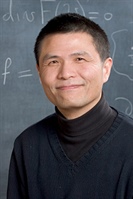
Affiliation:
Division of Applied Mathematics, Brown University
Candidate Statement:
I am always happy to provide service to SIAM and would feel honored to serve on the Board of Trustees if elected. SIAM is the main professional society for applied and computational mathematicians. It serves as a vehicle to facilitate the exchange of ideas and promotion of major research directions in mathematics, which can be used in application fields.
The power of mathematics in guiding and improving modeling, analysis, and computation in science and engineering can never be overemphasized. In return, scientists in applications can provide important insights to the kind of mathematics that is desired and can be expected to facilitate breakthroughs in applications. SIAM's role as a platform to facilitate collaborations between applied mathematicians and scientists in other disciplines is unique and can be expected to become more important in the future.
Council Members-at-Large
Natalia Alexandrov*
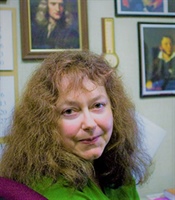
Affiliation:
Senior research scientist, NASA Langley Research Center
Candidate Statement:
During the current SIAM Council term, the advent of COVID-19 brought unprecedented changes and challenges to the world. The mathematical community responded with energy and dedication, developing models to help with optimal testing and strategies for flattening the infection curve and to understand the spread of infection in closed spaces and design safer environments, among other applications. COVID-19 underscores the importance of computational and applied mathematics in informed decision-making for problems on all scales. Given the cross-cutting nature of mathematical methods and algorithms, the remainder of this statement is unchanged from the previous election — the focus is still on the need for continued efforts in critical decision-making for difficult problems.
SIAM’s invaluable service to its worldwide community of researchers and practitioners, as well as to the domain of applied and computational mathematics, is evident. Therefore, I will limit my statement to a description of a problem to which, I believe, SIAM has an opportunity to make a critical contribution.
Self-adjusting systems (SAS) and adaptive systems, in general, are spreading from well-defined activities, such as manufacturing to complex activities with multi-faceted human interactions and decision-making, such as those involved in piloting an aircraft or medical diagnosis and prognosis. SAS’ ability to solve large problems of certain types far exceeds that of humans. However, until SAS are proven and perceived to be as or more adaptable than humans and resilient in the face of unanticipated faults and variable conditions, humans remain in ultimate control of decision-making while supported by machine-based information and advice. If the human is to remain the ultimate resolver of a problem, the problem must not be more complex than the human can solve. This raises the question of machine’s role. Moreover, human-machine interaction in many domains has numerous well-known and well-documented difficulties, including lack or excess of trust — both of which can lead to serious problems, especially in time-critical and safety-critical domains. Given the increasing complexity of such domains—e.g., skies dense with anticipated unmanned aerial vehicles and air taxis—SAS will acquire growing decision-making authority. When should machines have authority? Under what circumstances is machine decision making trustworthy?
Traditional validation and verification approaches do not answer these questions for SAS. A popular view holds that these problems will be resolved in the domain of autonomous surface transportation. Yet despite impressive advances, arguably, the current safety case for autonomous cars is “keep your hands on the wheel.” Airspace is less forgiving.
Understanding the properties and effects of autonomous computational decision-making in safety-critical environments requires a close collaboration of applied and computational mathematicians with colleagues in specific engineering domains, such as airspace. SIAM can play a vital role in promoting practical partnerships with domain researchers through active interaction with societies such as the American Institute of Aeronautics and Astronautics. Calling the attention of faculty and students in applied mathematics departments to numerous unsolved problems in autonomous systems carries not only valuable educational benefit, but a wider societal benefit as well. After all, everyone will have to coexist with decision-making machines.
Inga Berre
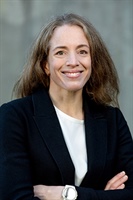
Affiliation:
Department of Mathematics, University of Bergen
Candidate Statement:
Understanding gained through application of mathematics and computational science is becoming ever-more important, and SIAM is the leading international organization to promote this development. With this comes a strong responsibility for the future of our field. With a strong commitment to SIAM’s advancement, I have enthusiastically accepted to stand for election to the SIAM Council. Below, I have highlighted three important areas of SIAM that I look forward to engaging in.
Ever since I attended the SIAM 50th Anniversary and 2002 Annual Meeting at the start of my Ph.D., SIAM has been my most important professional community. Acknowledging that a large portion of the students within our field have their first acquaintance with the international research community at a SIAM conference, we must continue efforts to attract, keep, and provide value to student members.
Currently, SIAM activity groups, conferences, publications, and prizes do not fully represent the diversity of the students and researchers in our field or in society in general. While SIAM has put a lot of effort into this work over the last years, this area needs continuous and strong attention.
As the leading organization for applied mathematics internationally, SIAM must strive to always provide the foremost platforms for research communication and dissemination. During the COVID-19 pandemic, SIAM has immensely improved possibilities for virtual participation in conferences and launched several webinar series. Ensuring that we utilize the best opportunities when we design physical, virtual, and hybrid meetings should be a key priority for the near future, along with tight monitoring and corresponding adjustment of new activities. In the changing landscape of scientific publishing, we must continue to ensure that SIAM’s journals provide the highest standards for publication and dissemination of high-quality research.
Evelyn Sander
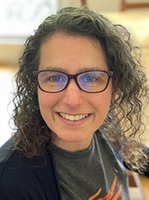
Affiliation:
Professor, Department of Mathematical Sciences, George Mason University
Candidate Statement:
SIAM leads the way in excellence of journals, books, and conferences for the applied mathematics and associated communities. I am a long-time enthusiastic member of the SIAM community. If elected as a member of the Council, I would be glad to help shape some of its future directions.
Within mathematics, SIAM stands out for its attention to diversity and inclusion of members of groups who are traditionally underrepresented in mathematics, including diversity of race, ethnicity, gender, and geography. However, severe inequity remains, and the Council should focus on changes that encourage inclusion. At the senior level, these changes need to include increasing diversity in the makeup of organizing committees, plenary speakers, prize committees, editors, and referees. At the junior level, it means targeted outreach; increasing diverse student participation in SIAM student chapters, conferences, and summer schools; and crucially, making sure that there are programs in place to ensure that everyone is welcome when they do participate. Doing this well requires a commitment to consult with members of underrepresented communities before making important decisions.
Another key item for the Council is the future of conferences. Tools for virtual interaction have the potential to reshape the way we interact and make it easier to participate in conferences and research collaborations without the financial and environmental burden of travel. However, fully virtual participation cancels many of the valuable interactions that foster creativity that is needed for advancements in mathematics and science. SIAM has an opportunity to lead the way in shaping the future of conference and workshop participation by experimenting with our new flexibility to find a delicate balance.
Carola-Bibiane Schönlieb

Affiliation:
Department of Applied Mathematics and Theoretical Physics, University of Cambridge
Candidate Statement:
I am passionate about mathematics and its applications. I love mathematical imaging in all its aspects and flavours as it spans a variety of mathematical topics and application areas. Having a broad research portfolio within applied mathematics myself, I believe I can therefore appreciate diverse approaches to one and the same problem solved by partial differential equations, applied harmonic analysis, machine learning, etc. Indeed, I see the power of SIAM in making it possible to bring these different mathematical topics together and provide a platform for fruitful exchange within our discipline, as well as with users and promoters of the work that we do. I strongly believe in the development of mathematics in close collaboration with application experts and the promotion of mathematics through its important applications, and I am therefore fond of the SIAM philosophy of communication with researchers in other disciplines and interdisciplinary research.
I would be very happy to support our community by serving as a member of the SIAM Council for the next term. I will aim to continue the excellent work done by the current leadership, with my heart in showcasing the highlights of our research, encouraging early career researchers in mathematics, improving diversity in mathematics, and fostering dialogue and exchange within our mathematical community.
Stay Up-to-Date with Email Alerts
Sign up for our monthly newsletter and emails about other topics of your choosing.



